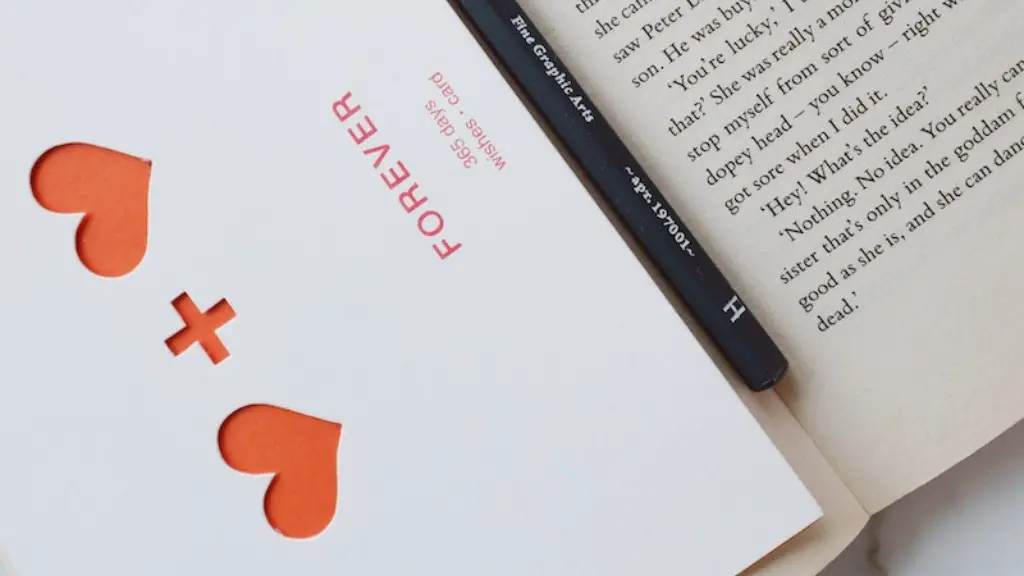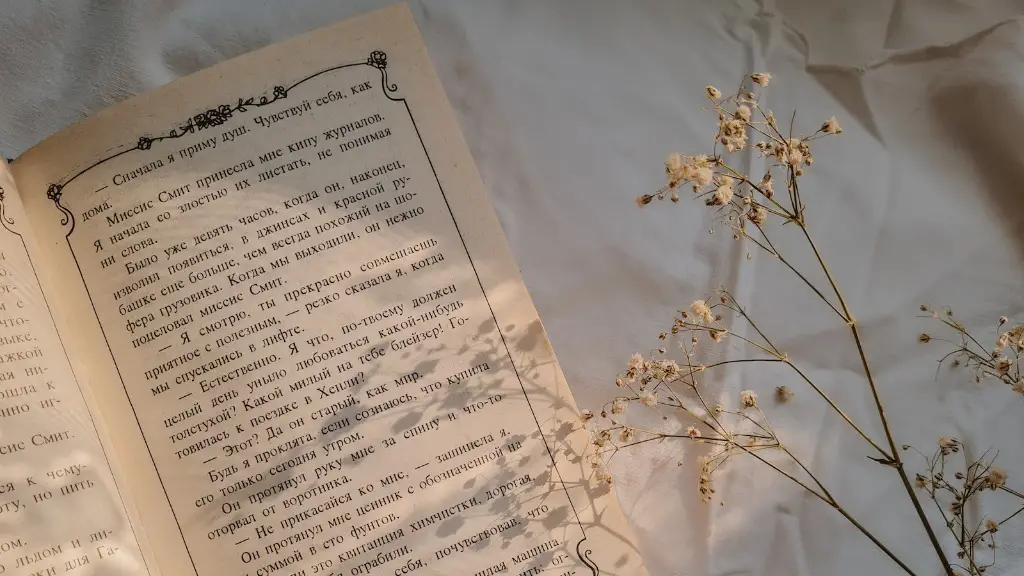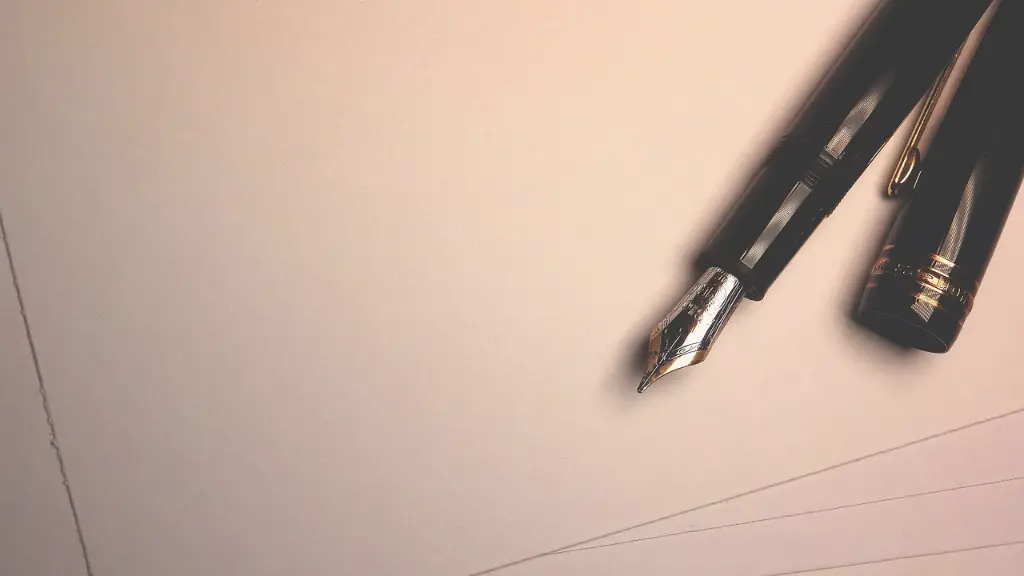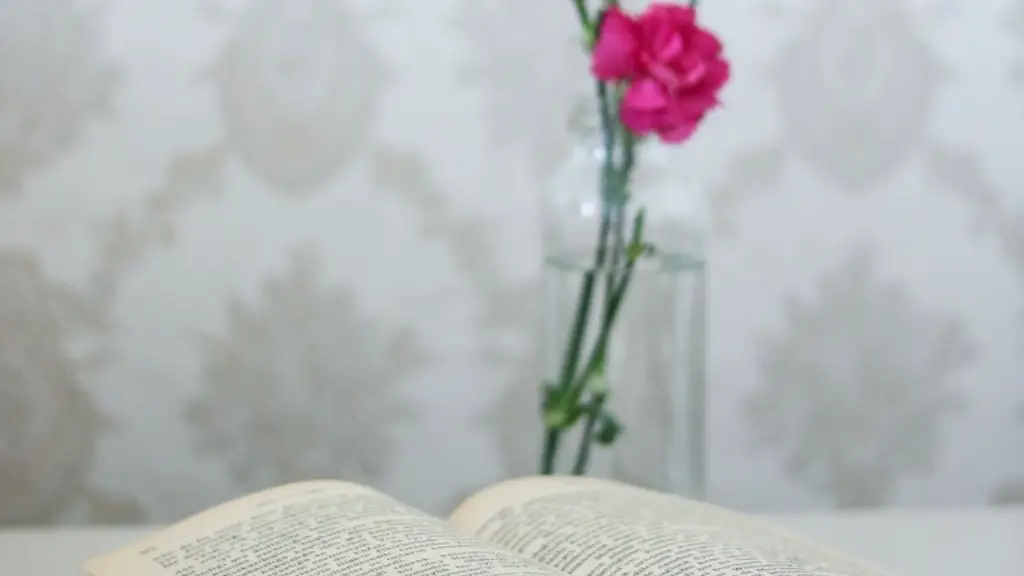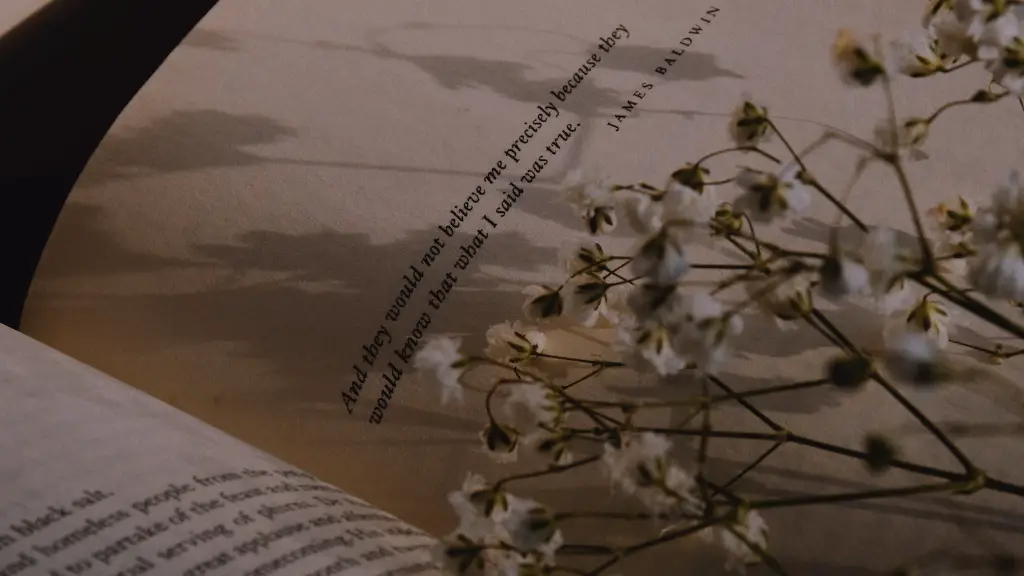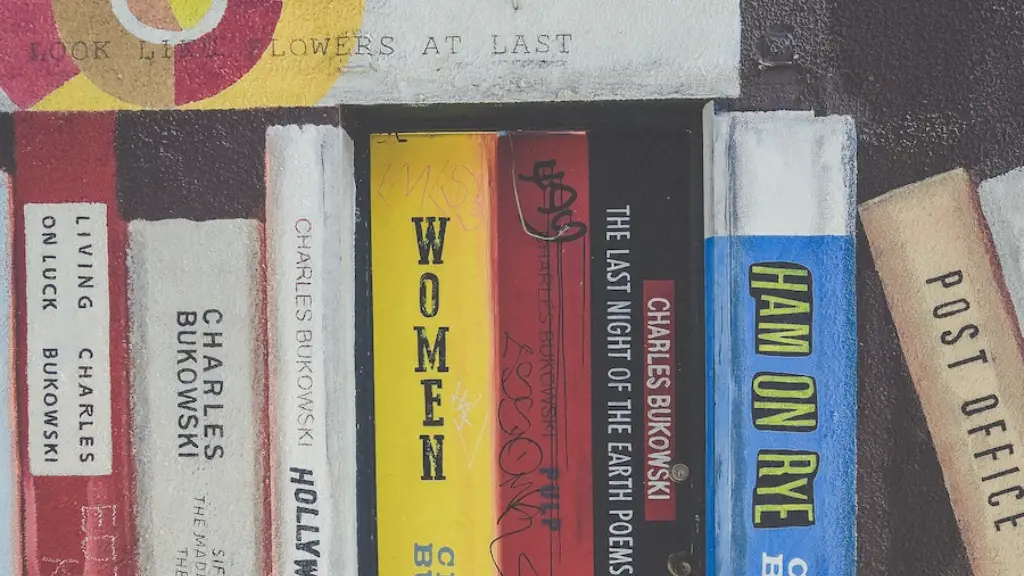Rhymed poetry is the use of words that make a musical sound when read in a particular fashion. It’s a type of literature that has been used for millennia, often to convey stories, insights, and emotions in a string of vivid images. It’s highly structured and can incorporate intricate patterns, rhymes, and elements of metre in order to bring out its unique style and meaning. The popularity of rhymed poetry has changed throughout its long history, however it’s still a much-loved way of expressing artistic creativity.
The rhythm of rhymed poetry is a conscious combining of regular sounds that are used to create a certain mood or atmosphere. By its nature, rhymed poetry is highly structured and often relies on complicated patterns that bring out the resonance of the words used. Through its use of language, rhymes, and metres, it helps the reader to clearly recognise the poet’s intended meaning in his or her words. Its visceral and powerful sound effects can evoke intense emotions from its readers, making it a powerful tool of self-expression.
In addition to its musical structure, rhymed poetry often features figurative language, such as metaphors, symbols, and allegories. Through this figurative language, the poet can draw attention to certain subjects, provide deep insight into the meaning behind his or her words, or develop an argument in a more intriguing way than could be done through a traditional prose form. The effective use of figurative language often requires great skill and the right timing, but when handled with expertise can truly transform a piece of rhymed poetry.
Rhymed poetry has been a part of many different cultures around the world and its status as a literary and artistic form has changed throughout history. In the 19th century, writers and poets around the world began to focus more on free verse, leading to a decline in popularity and respect for the poetic form among academics. However, it remains a valuable type of writing and is still found in popular culture, such as in songs, children’s books, and movies.
Rhymed poetry is also used as a means of understanding and exploring the complex rift between emotions and thoughts. By using language to capture the complexity of our personal situations and those we observe, poets can convey powerful messages about the human condition. Through its intricate patterns and complex rhyme schemes, poets can capture the nuances of life and express deep insights that may otherwise go unnoticed.
Furthermore, rhymes are often used as a tool of instruction, particularly when teaching young children or those who are learning a foreign language. By incorporating rhythm and music into their education, children can remember and recall vast amounts of information such as facts, dates and figures more quickly, as the information is stored more effectively in the mind when put to verse.
Though the popularity of rhymed poetry has waxed and waned over the centuries, its literary and aesthetic value continues to be appreciated by people of all ages. Through its use of powerful imagery, intricate language and compelling rhyme schemes, it’s the perfect tool to convey powerful ideas and messages in a concise and entertaining manner.
The Power of Rhymed Poetry
The fact that rhymed poetry has been around for centuries is indicative of its power and ability to inspire. By its very nature, rhymed poetry is an exceptionally powerful way of expressing ideas, thoughts and truths that may not have been articulated in any other way. Its highly structured nature allows for significant control over the direction of the narrative and its intricate melodies can unlock a new dimension to the meaning of the words.
In the modern day, we are saturated with electronic media and digital technologies, making rhymes all the more relevant. In this era of instant communication, rhymed poetry is a way to ensure that a message will stand out and resonate. By responding to our increasingly busy lives, this medium demands attention and demands to be heard. Its ability to draw out any emotion or idea makes it an effective form of communication.
By combining sound and words, the poet can draw the reader in and evoke a deep emotional response. We’ve all heard songs that have left us moved and this is the same effect that rhymes can have over us. As readers, we can often relate to the idea that’s being expressed as the words and music merge together to paint a vivid picture. So, by combining sound and words, the poem is transformed, allowing the reader to develop a deeper understanding of the poem and its message.
What makes rhymes so powerful is that it does not need to present a complete narrative to be understood and appreciated. Unlike other forms of literature, poem readers don’t need to read through to the end to understand the point. Rhymed poetry’s unique combination of sounds and visuals can draw the reader in and extract a meaningful response within a few sentences.
Ultimately, this makes this form of poetry an exceptional tool of self-expression as it allows the poet to convey powerful emotions and experiences in a short form. It also leaves room for interpretation, making it accessible to a wide range of readers.
The Impact of Rhymed Poetry
The impact of rhymed poetry varies from culture to culture and generation to generation. Throughout its long history, it has been used to express love, grief and all manner of insights, making it a powerful tool in the literary landscape.
It is widely used in the modern day in many different industries, including the music industry. Many of our most beloved songs are written in rhyme, as it allows the songwriter to capture and express their thoughts, feelings and experiences in a form that everyone can relate to. This form of poetry is especially powerful as it is a way to capture and express complex emotions in a short, concise and accessible form.
Rhymed poetry is also used in many forms of education, such as children’s books and teaching methods. Its combination of sound, rhythm and visual imagery makes it an excellent tool for learning, as it captures the reader’s attention and makes the subject matter more memorable and engaging. Furthermore, with its underlying musicality, rhyme helps to add an emotional component to the language, making it more engaging and enjoyable for the reader.
In addition, rhymed poetry is often used to convey political messages or platforms in a way that’s far more visceral than traditional forms of communication. Its powerful structure allows for complex topics to be explored in relatively few words, leading to a succinct and powerful message that captures and engages its readers in a short space of time.
Finally, rhymed poetry continues to be a powerful outlet for personal expression and creativity. It allows us to channel our innermost feelings and thoughts in this captivating and communicative form of poetry.
The Creative Value of Rhymed Poetry
The creative value of rhymed poetry lies in its ability to express complex emotions in a highly structured form. Poets can capture the nuances of people’s complex lives in a way that cannot be done in plain speech or prose. Through its intricate patterns of words and sounds, it lets its reader experience the full force of its intended message without the need for long, drawn out sentences.
Rhymes also allow for significant artistic license and experimentation. Poets have the unique ability to paint vivid images in their reader’s minds and draw out strong emotions with their eloquently-crafted verses. Through its emotive appeal, it creates a complex and mesmerising experience for its reader and can make a deep-rooted impact if written with skill and precision.
Poets also use this form of literature to tackle difficult issues such as social injustice, mental health, and politics. Rhyming allows for a more nuanced exploration of these issues, enabling the reader to gain a deeper understanding of the root cause of the problem and the implications of not addressing it.
Rhymed poetry also has an important role to play in our culture, as it allows us to explore our collective identity and give voice to our shared experiences. By evoking deep emotions and vividly capturing our collective experiences, it has the potential to heal and bring people together. From love to loss and conspiracy to celebration, rhyme can open up a realm of possibility.
In conclusion, the intricate and powerful style of rhymed poetry has remained popular across the globe for centuries. Its highly structured format and emotive nature makes it the perfect tool of creativity and expression and its relevance in modern life remains as compelling as ever.
The Educational Benefits of Rhymed Poetry
The educational benefits of rhymed poetry have long been recognised, particularly when it comes to teaching and learning. For example, rhyme has been known to lighten the mood of classrooms, even those of bored students. Rhymes are often used to introduce new material or to review previously learned information and this kind of repetition helps to create a lasting impression in the minds of the students.
In addition, rhymes are often more appealing to students, as they can relate to the content more easily. By capturing difficult concepts in a fun and captivating manner, rhymes can foster a more engaging learning environment. This can in turn lead to increased discussion and self-reflection which can give students a deeper understanding of the material.
Furthermore, the use of sound helps to improve student’s comprehension and recall of facts, figures and concepts. The use of rhythm, rhyme, and melody can capture the student’s attention and help them to remember information more easily. Through its repetition of sound, it also helps to build more confidence in the student’s ability to recall and recite the material.
Finally, rhymed poetry is often used to encourage creative thinking in students. It motivates them to think outside of the box and come up with innovative solutions to problems, inspiring them to take chances and explore new possibilities. In this sense, rhymed poetry can be an invaluable tool for teaching and learning, allowing us to navigate our difficult problems in a creative and engaging way.
